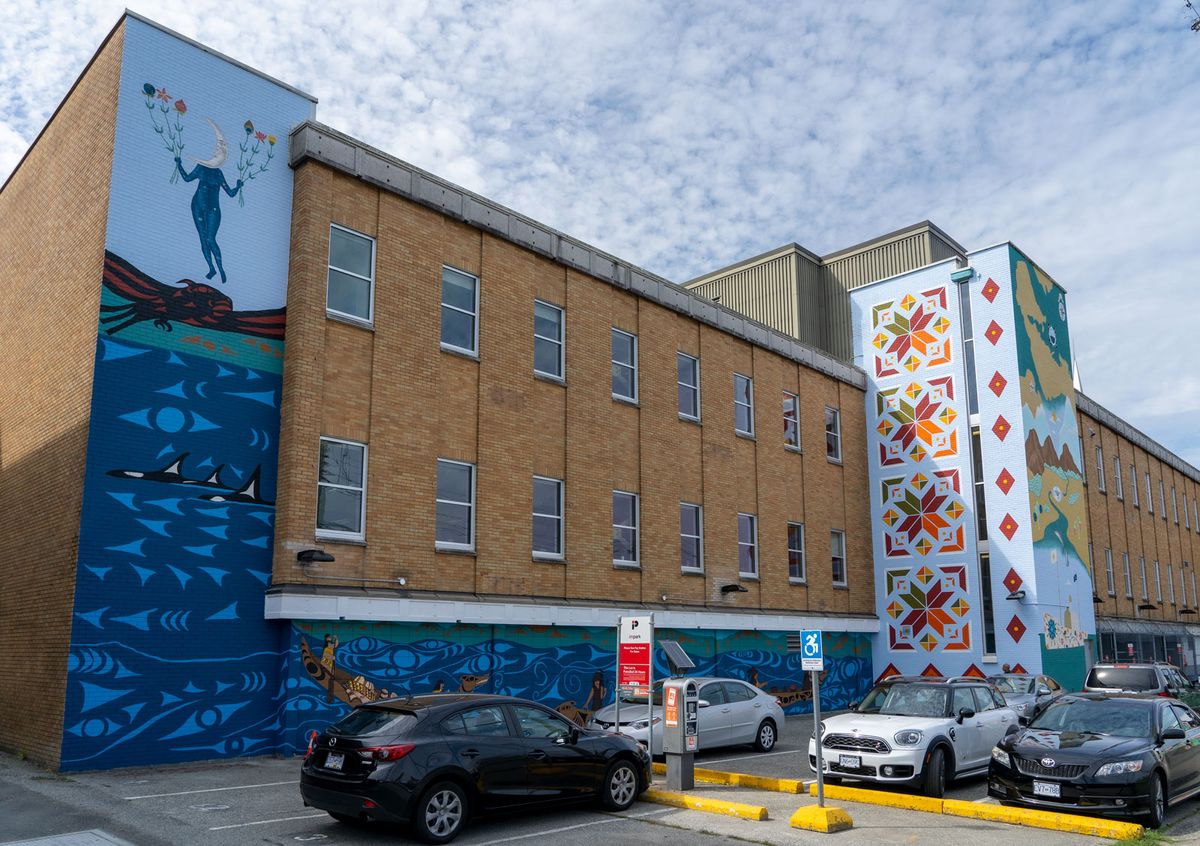A 4,000-sq ft mural recently unveiled during the Vancouver Mural Festival serves to further decolonisation efforts in the city—and draws parallels to immigration controversies today.
The mural commemorates the Komagata Maru incident of 1914, when a ship carrying 374 passengers from British India’s Punjab region was turned away from a Vancouver harbour after a lengthy legal battle. The ship arrived on the eve of the First World War, when political tensions were running high and the Indian Independence movement was gaining ground. Yhe Canadian government claimed the boat carried a number of Indian nationalist rabble rousers, but the real motive was to prevent the immigration of Indian nationals. The passengers on board, blocked for two months in the Burrard Inlet, were aided by the local Musqueam people, who paddled out in canoes to bring them supplies.
Combining Coast Salish, South Asian and surrealist styles, the mural was created by the Musqueam artists Alicia Point and Cyler Sparrow-Point, and the South Asian-Canadian artists Keerat Kaur, Sunroop Kaur and Sandeep Johal, with help from historian Naveen Girn. In one panel, orca whales—the Musqueams’ mythical ancestors—are shown circling the ship as a sign of protection, another references pattern work in Musqueam art, while a figure holding flowers up to the sky above totems symbolises hope for the future. The mural’s name Taike-Sye’yə, also reflects the local connection between South Asian immigrants and First Nations communities. The word “taike”—a Punjabi word specific to Canada—means “cousin” or “older brother”, while the hən̓q̓əmin̓əm̓ word “Sye’yə” means “friend”.
“We should celebrate (our) differences, and that’s what these artists have done,” the Musqueam artist Debra Sparrow said at the mural’s unveiling. “They have carried their history with them into the paintbrush.”
The work was painted on the side of a federal government building formerly named for Harry Stevens, a Conservative MP in Vancouver from 1911 to 1917, and enthusiastic supporter of both anti-Asian immigration laws and sending the Komagata Maru back to India. When the ship returned to Calcutta, some of the passengers were killed by Indian Imperial police and dozens were arrested. During the mural’s unveiling, Stevens’s name was officially removed from the building and it is now simply known by its street address: 125 10th Avenue.


